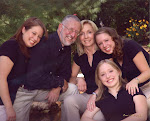I have recently come to understand that the act of communication is a covenantal act. It requires relationship to understand the communication. True communication occurs with cooperation and a common understanding of the culture of the words used. This short piece is an excellent effort to engage not only the meaning of the words but the feeling as well:
Beautifully crafted and painstakingly constructed, poetry is one of the grandest forms of art and communication available to the human race. Delving deep into the intricacies of both form and content, we often speak of the meter of the poem, the figurative language held within it, the structure and the meaning of the poem. Except for rhyme, however, we rarely speak of the “sound” of the poem. What words, what letters does the author use and how does the sound of those words communicate his point? The syllables of Tennyson’s “Ulysses” were not haphazardly slapped together, nor were the rumble bumble of words merely a side effect in Dr. Seuss’ work. To illustrate the point, let us walk through Edgar Allen Poe’s well-loved poem, “The Bells.” In each stanza of this poem, Poe highlights and describes a different type of bell and, to fully communicate the sound and use of these bells, Poe uses and repeats specific vowel sounds.
In the first stanza of “The Bells,” Poe depicts the chiming of Christmas bells. To describe the sound of a Christmas bell, Poe continually uses the letter, and the sound of the letter, “i”. If you pronounce the short sound of this letter to yourself, what you will notice is that it produces a small, light sound that doesn’t travel far. Even the duration of the sound is short-lived. Thus words like “silver”, “merriment”, and “tintinnabulation”, actually reflect the bells themselves and the sound they make: small, light and short lived. Employing the long sound of the letter “i” gives Poe the ability to reflect the sound of the bells as well as the cold and icy environment in which these Christmas bells are used. Words like “icy”, “crystalline”, “delight”, and “rhyme” pierce the ear as would both the high pitch of the bells and the winter weather. Then, coupled with an “ng” or “nk”, the “i” can produce a rather joyous tone. Thus, words like “tinkle”, “twinkle”, “jingle” and “sprinkle” audibly create a mood of carefree innocence and delight.
As Poe moves on to the second stanza, he moves from the light sound of Christmas bells to a deeper more solemn sound of wedding bells. Compared to Christmas bells, a wedding bell will create a larger, deeper, rounder and more lasting sound; and to achieve this in poetry, Poe uses the sound of the letter “o” throughout this stanza. The “note” of the “molten-golden” “mellow” bells that “floats” through the air is indeed a more mellow and golden sound. The “o” sound has a deep pitch as your voice gives it more resonance, as would the larger wedding bells. Furthermore, this sound is heavier and thicker than the light sound of the “i”s in the first stanza, communicating well the more solemn occasion of a wedding.
The sounds brought to the fore in the third stanza are the long “a” and “e” sounds. After the light and mellow sounds of the “i” and “o” in stanzas one and two, enunciating these two long vowels is quite literally more pronounced. The sounds these vowels induce are sharper than the soft melodic sounds of “o” and “i.” What more perfect sounds could Poe use to communicate alarm bells in this next stanza? He describes the “clangor” of the “brazen” bell with its “scream” and “shriek” as it “twangs” and “clangs”, with its “jangling” and its “wrangling” through the “palpitating” air. Some of the words used here would qualify as “onomatopoeia”, but Poe can communicate alarming terrors simply by repeating noises that sound alarming to our ears.
From silver bells to golden bells to shrieking bells, Poe brings us finally to the haunting bells of the night. For these bells, we hear the sounds “oo”, “oa” and a few more “o”s. Interestingly enough, these are the sounds that we naturally use to describe many haunting things. The groaning of the wind through the trees, the hooting of an owl, the howling of dogs and jackals, the spooking of the ghosts; we continually use these hollowing sounds to describe our nocturnal dread. Poe also uses them to describe the bells that toll and knell through the dark reaches of the night. The “moaning” and the “groaning” from these rusty “throats” keep a “Runic” rhyme declaring the presence of “ghouls.” A still darker sound than any that Poe has used yet, a sound that must literally rise from the hidden recesses of your mouth, is one of the perfect tools he uses to depict the hollow and unnerving sound of these bells that knell in the night.
Every word we use is more than just an identification for a person, place or thing; it is a description with multi-layered and subtle connotations. Beyond their basic meanings, the sounds of words are their poetic intimations, evoking selected shades of objective reality. Good poetry always uses these shades to paint a picture that may sometimes exceed the beauty of visual perception. A picture may be worth a thousand words, but one well-chosen word can paint a masterpiece.
Thanks, Erin.
Subscribe to:
Post Comments (Atom)






2 comments:
Excellent. Thanks for sharing your daughter's insight. Can't we get her back to STL to teach?
Believe me, I am trying.
Post a Comment